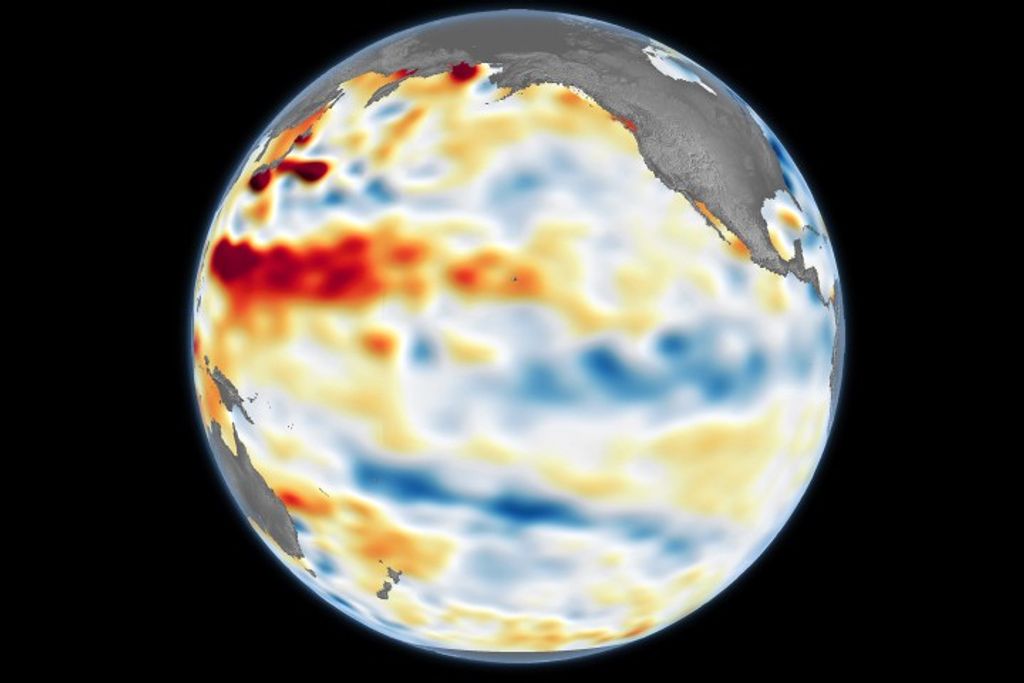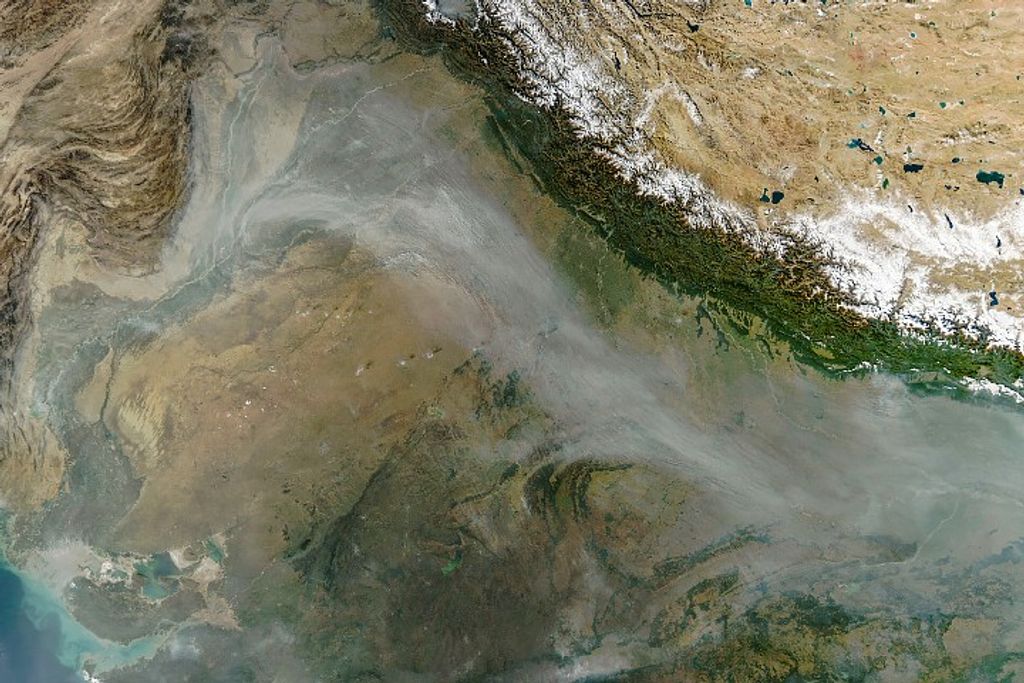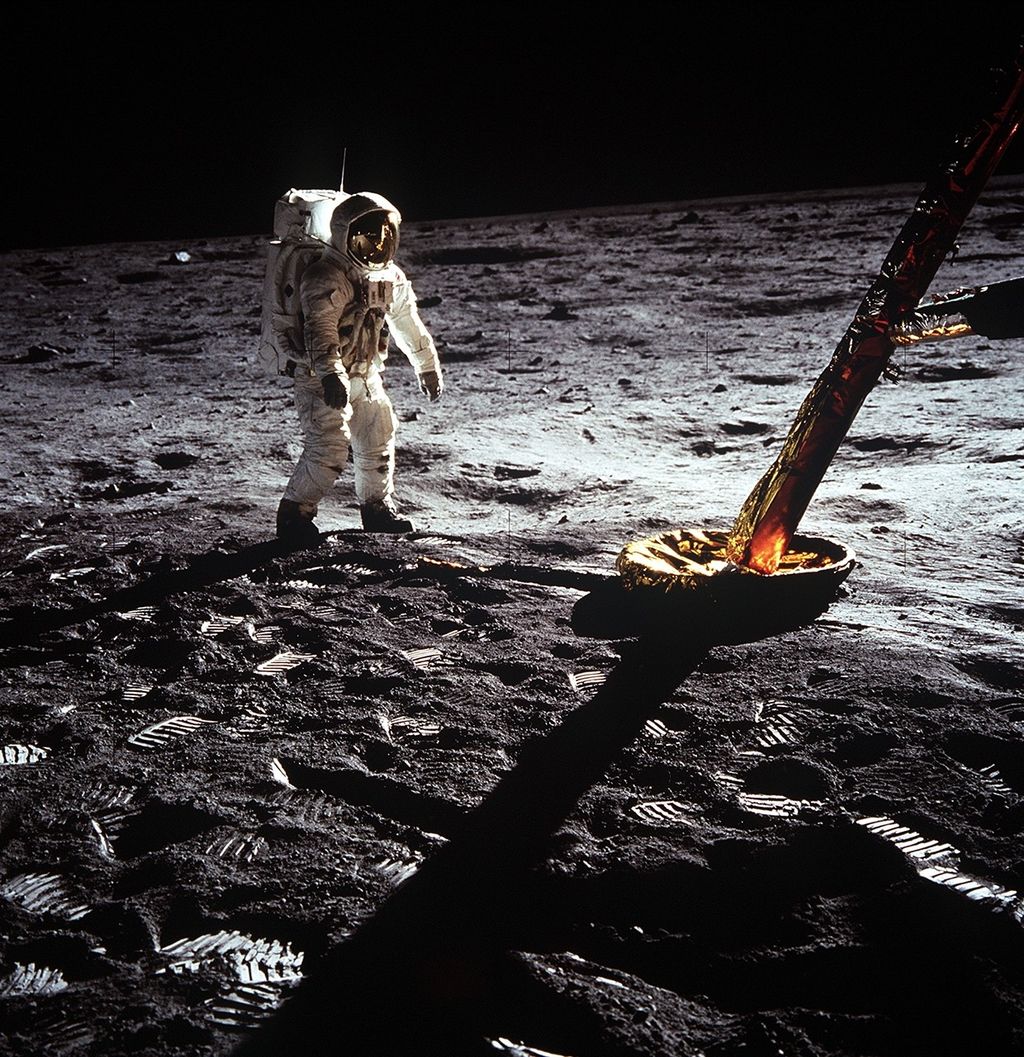1 min read
Quasar’s Light Yields Clues to Outflow

This illustration shows the light of several distant quasars piercing the northern half of the Fermi Bubbles, an outflow of gas expelled by our Milky Way galaxy's hefty black hole. The Hubble Space Telescope probed the quasars' light for information on the speed of the gas and whether the gas is moving toward or away from Earth. Based on the material's speed, the research team estimated that the bubbles formed from an energetic event between 6 million and 9 million years ago.
The inset diagram at bottom left shows the measurement of gas moving toward and away from Earth, indicating the material is traveling at a high velocity.
Hubble also observed light from quasars that passed outside the northern bubble. The box at upper right reveals that the gas in one such quasar's light path is not moving toward or away from Earth. This gas is in the disk of the Milky Way and does not share the same characteristics as the material probed inside the bubble.
About the Object
- R.A. PositionR.A. PositionRight ascension – analogous to longitude – is one component of an object's position.17h 28m 19.80s
- Dec. PositionDec. PositionDeclination – analogous to latitude – is one component of an object's position.-14° 15' 55".87
- ConstellationConstellationOne of 88 recognized regions of the celestial sphere in which the object appears.Serpens
About the Data
- Data DescriptionData DescriptionProposal: A description of the observations, their scientific justification, and the links to the data available in the science archive.
Science Team: The astronomers who planned the observations and analyzed the data. "PI" refers to the Principal Investigator.The science team comprises: A. Fox and R. Bordoloi (STScI), B. Savage (University of Wisconsin, Madison), F. Lockman (NRAO/GBT), E. Jenkins (Princeton University Observatory), B. Wakker (University of Wisconsin, Madison), J. Bland-Hawthorn (Institute of Astronomy/University of Sydney), S. Hernandez (STScI), T.-S. Kim (Osservatorio Astronomico di Trieste, Italy), R. Benjamin (University of Wisconsin, Whitewater), D. Bowen (Princeton University Observatory), and J. Tumlinson (STScI). - InstrumentInstrumentThe science instrument used to produce the data.HST>COS
- Object NameObject NameA name or catalog number that astronomers use to identify an astronomical object.Fermi Bubbles
- Release DateMarch 9, 2017
- Science ReleaseHubble Dates Black Hole’s Last Big Meal
- Credit

Share
Details
Claire Andreoli
NASA’s Goddard Space Flight Center
Greenbelt, Maryland
claire.andreoli@nasa.gov






























